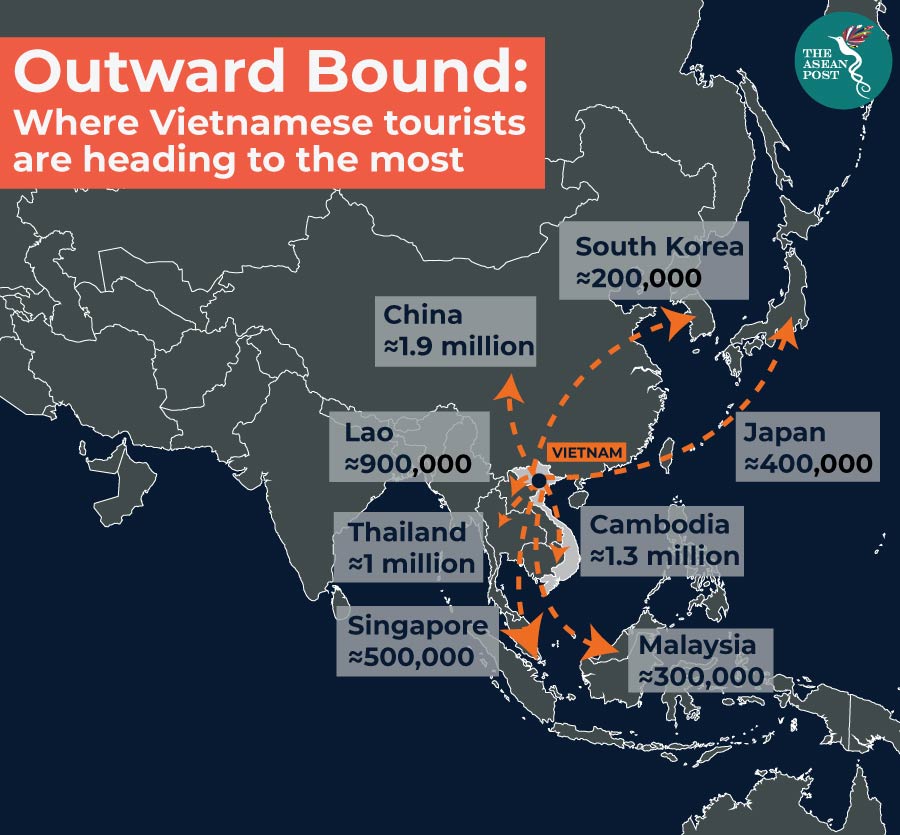As the Lunar New Year fast approaches, the Southeast Asian region will see more inbound and outbound travel exchanges via air travel. According to the Financial Times, in Vietnam, outbound air travel in 2018 is growing faster than it ever has. Outbound tourism from Vietnam has been growing at an annual rate of 10-15 percent over the past few years, according to a Euromonitor report in 2017.
This trend can be compared to Vietnam’s neighbour, China, where a rising disposable income is one of the main driving factors behind outbound travel during the festive period. As for Vietnam, the soaring numbers can also be accredited to a rapidly growing middle class.
Outbound travel highs
According to VN Express International, travel agents said they have received 20-30 percent more bookings for overseas travel this year alone than in 2017.
“Vietravel has received an estimated 19,000 bookings for outbound tours this Tet, while Lu Hanh Viet and Hanoi Red Tour have forecasted 10,000 and 3,000 customers, respectively. Thailand, Singapore, Malaysia, South Korea and Japan are proving to be the most popular destinations.”
“Rising overseas travel is a result of smooth economic development and an expanding middle class. A more affluent younger generation now wants to see the world. They are willing to spend more money on experiencing new destinations,” said Nguyen Cong Hoan, vice general director of Hanoi Redtour.

The Euromonitor report also shows that Vietnamese travellers took 7.5 million foreign trips last year alone, with China being the top destination followed by Cambodia and Thailand. According to the Vietnam Tourism Association, Vietnamese tourists spent US$8 billion in 2016 (the latest year for which data was available), which is more than double the US$3.5 billion they forked out in 2012.
Apart from outbound travel, domestic travel has also seen a rise in the country. This is due to the increase in number and availability of budget carriers such as VietJet and AirAsia.
The growing middle-class
In a survey by Boston Consulting Group (BCG), Vietnam was found to have the fastest growing middle class in Southeast Asia. BCG expects Vietnam’s per capita income to increase to US$3,000. Meanwhile, market research firm Nielsen has also estimated that the number of middle class Vietnamese will reach 44 million by 2020 and 95 million by 2030.
The expansion of the middle class population in Vietnam is said to be a result of a steady growth momentum, according to a 2017 World Bank report.
“Stronger domestic demand, robust export-oriented manufacturing, and a gradual recovery of the agriculture sector, are driving Vietnam’s economy, which expanded by 6.4 percent during the first nine months of the year compared to the same period last year,” said the report.
Through these economic opportunities, job growth continued, with 1.6 million new jobs added to the manufacturing sector over the past three years, and 700,000 additional jobs in the construction, retail, and hospitality sectors, leading to a higher aggregate of labour productivity. The increase in labour demand also contributed to rapid wage growth, with wages increasing by 15 percent cumulatively between 2014 and 2016.
According to Nielsen, “…travel ranks among affluent Vietnamese people’s top three hobbies, ahead of dining out and buying new clothes.” These findings were based on a survey of 300 consumers aged 30-55 in Hanoi and Ho Chi Minh City, Vietnam’s two largest cities. Vietnam’s middle class which consists largely of a younger population, are also powering the retail and consumer industries such as clothing, real-estate and cars as well as alcohol.
Vietnamese travel and retail businesses can definitely take advantage of this surge in middle class population by ensuring their brands are being pushed through all channels. Companies would need to explore below the surface of economic data to understand where the best opportunities lie, and use that analysis to guide decisions and strategies in order to encourage market growth in all areas of the country.
Related articles:
How will US-Russia relations impact ASEAN?
Thailand’s EEC on track to support next wave of industrialisation
